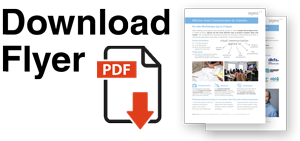The Best Resources for Free Scientific Stock Illustrations and Photos (2024)
When crafting a scientific paper, poster, or PowerPoint presentation, the thought of creating the necessary images can be daunting after extensive writing. Clear and precise visuals are crucial in scientific communication, but did you know that you can alleviate this burden by using free professional clipart and stock photos?
Here, we introduce several free image resources with tons of scientific clipart and elements perfect for enhancing your publication. However, remember to check the journal’s policy on third-party content, as some journals require all images to ...
Humans Are Visual Creatures
Here we gathered some interesting facts to emphasize why using visual aids in scientific communication is so important.
(more…)
5 Websites with Free Science Art and Photos
Did you know that you can get professional clipart images and stock photos to use free of charge in your research papers, posters and PowerPoint presentations? Even if it is in restricted-access papers that could be interpreted as commercial use? Below we present a selection of free image repositories with scientifically-appropriate content, which is especially convenient to use in graphical abstracts. We added notes on the terms and conditions of use, so that you can be confident you're using the material in the right way.
However, always check the journal's policy on ...
What is Effective Communication?
Communication, spontaneous and strategic
Communication is all around us. It is the process of exchanging information or ideas between individuals or groups. The purpose of communication is to share information and coordinate actions in order to achieve a common goal or understanding. But what contributes to making the communication effective? Is there any way for us to become more effective communicators?
(more…)
How to Create an Effective Graphical Abstract • Guide
What is a graphical abstract?
A graphical abstract (also called 'visual TOC' or 'TOC figure' or 'visual abstract') is a figure that succinctly visually conveys what your research is about. They have been a part of scientific publications for decades in some research fields (e.g. chemistry) but have only recently penetrated other research fields. As there is not a lot of literature on graphical abstracts, I'll share some of my findings from analyzing thousands of graphical abstracts from different journals.
(more…)
How Scientists Read Research Papers
If you are a scientist, a large part of your career success depends on whether your research will be published, cited, and your project/grant proposals funded. As you’ve most probably already realized, even the most groundbreaking results will be neglected and often missed by the community if they are not effectively communicated. However, to effectively communicate, we should first understand the audience and how they consume information. The aim of this post is therefore to present a perspective on how most scientists read research papers when they first encounter them ...







